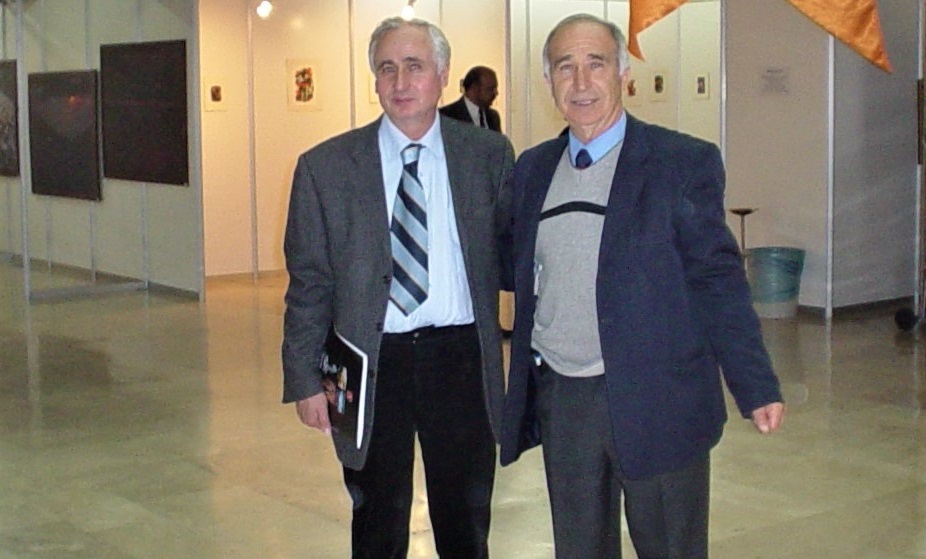
In the four-year “International Mediterranean Evaporite Project”, in which 29 scientists and 6 young researchers from 13 universities and 4 organizations from 10 countries will participate, the Director of the Near East University Earthquake and Soil Research and Evaluation Center in Cyprus and the Head of Petroleum and Natural Gas Engineering Department Prof. Dr. Cavit Atalar representing Near East University.
Recently intensified oil and natural gas exploration in the Mediterranean has paved the way for a detailed re-exploration of the geological units of Cyprus. With the four-year “International Mediterranean Evaporite” project, in which 29 scientists and 6 young researchers from 10 countries, 13 universities and 4 institutions will participate, research will be carried out in various countries of the Mediterranean. A 3-year doctoral scholarship will be awarded on “Cyprus Messinian Sedimentology” as part of the project, in which the evaporite formations in the Mediterranean will be investigated.
At the start of the “International Mediterranean Evaporite” project, which includes 13 universities and 4 organizations from 10 countries, the research conducted by Near East University Earthquake and Soil Research and Evaluation Center Director and Petroleum and Natural Gas Engineering Department Head Prof. Dr. Cavit Atalar and former Head of Ankara University Geological Engineering Department Prof. Dr. Baki Varol on the evaporites (gypsum) for 17 years was influential on the project and attracted attention in the scientific world. In the new project, in which only the Near East University will take place among the universities of Cyprus, the university and Cyprus will be represented by Prof. Dr. Cavit Atalar.
The structures of Northern Cyprus gypsum will be investigated
Stating that a scientific project of this scale will be carried out for the first time, Prof. Dr. Cavit Atalar said that the results of the project will once again reveal the importance of Cyprus and Eastern Mediterranean geology. Since 1994, he has been working with scientists from Cyprus and different countries in many research projects related to the seismicity of Northern Cyprus, soil properties, landslides, calcarenite and gypsum, and sharing the results of these researches with the scientific world through scientific articles and papers. Prof. Dr. Cavit Atalar stated that they are investigating how the structures of gypsum stones formed in the Messinian period about 6 million years ago in Cyprus.
Northern Cyprus geology is under investigation!
Near East University Earthquake and Soil Research and Evaluation Center Director and Petroleum and Natural Gas Engineering Department Head Prof. Dr. Cavit Atalar has carried out many projects related to the geological structure of Northern Cyprus. With the financial support provided within the scope of the Republic of Turkey and Near East University Scientific Research Projects (BAP), Prof. Dr. Cavit Atalar, former Head of the Department of Geological Engineering at Ankara University, Prof. Dr. Baki Varol, have published three papers and one article regarding the properties and importance of Northern Cyprus gypsum stones.
Prof. Dr. Cavit Atalar, together with Prof. Dr. Baki Varol, announced the first results of the investigations they carried out within the scope of the “North Cyprus Evaporites (gypsum) project” since 2005 in a paper titled “Sedimentology of the Northern Cyprus Messinian Evaporites” in 2007. Immediately afterwards, the paper titled “Environmental and paleogeographic features of Northern Cyprus Messinian evaporites” was presented in 2008, and a paper titled “Sedimentology and Mineralogy of Gypsies Containing Elemental Sulfur (Tuber) in Northern Cyprus Messinian Evaporites” was presented in 2015.
The article titled “Messinian evaporites in the Mesaria Basin, Northern Cyprus: facies and environmental interpretations” published in the international journal “Carbonates and Evaporites” in 2017 attracted great attention from those working on evaporites.

